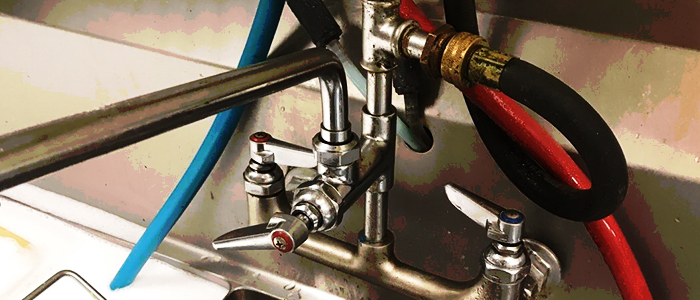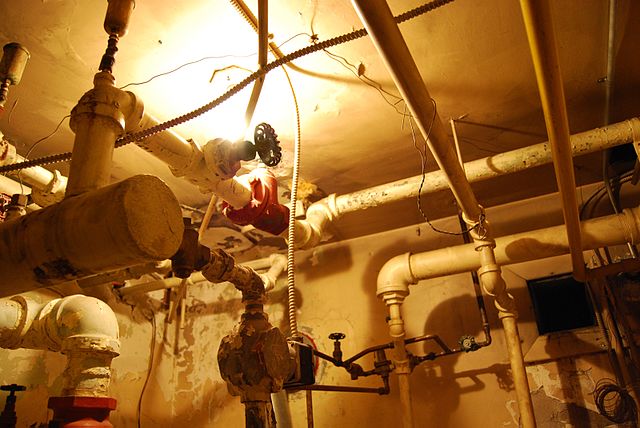The Basics to Your Home's Plumbing System Anatomy
The Basics to Your Home's Plumbing System Anatomy
Blog Article
Are you interested in related information concerning Understanding Your Home's Plumbing Anatomy?

Understanding exactly how your home's pipes system works is vital for every property owner. From providing tidy water for drinking, cooking, and bathing to securely getting rid of wastewater, a well-maintained plumbing system is critical for your family members's health and wellness and convenience. In this extensive guide, we'll explore the intricate network that composes your home's pipes and deal tips on upkeep, upgrades, and taking care of usual problems.
Introduction
Your home's pipes system is greater than just a network of pipelines; it's an intricate system that ensures you have access to tidy water and effective wastewater removal. Recognizing its elements and how they work together can aid you stop expensive repair work and guarantee every little thing runs efficiently.
Basic Elements of a Pipes System
Pipelines and Tubing
At the heart of your pipes system are the pipes and tubing that bring water throughout your home. These can be made of numerous materials such as copper, PVC, or PEX, each with its benefits in terms of resilience and cost-effectiveness.
Components: Sinks, Toilets, Showers, etc.
Components like sinks, commodes, showers, and tubs are where water is used in your house. Understanding just how these fixtures attach to the plumbing system aids in identifying problems and preparing upgrades.
Valves and Shut-off Factors
Shutoffs regulate the flow of water in your pipes system. Shut-off valves are vital throughout emergencies or when you require to make repair services, permitting you to isolate parts of the system without interrupting water circulation to the whole house.
Water System System
Key Water Line
The major water line connects your home to the local water supply or a personal well. It's where water enters your home and is dispersed to different fixtures.
Water Meter and Stress Regulatory Authority
The water meter procedures your water use, while a pressure regulatory authority guarantees that water moves at a safe pressure throughout your home's pipes system, preventing damage to pipelines and components.
Cold Water vs. Hot Water Lines
Comprehending the difference in between cold water lines, which supply water directly from the primary, and warm water lines, which bring warmed water from the hot water heater, helps in fixing and preparing for upgrades.
Water drainage System
Drain Pipes Piping and Traps
Drain pipes bring wastewater far from sinks, showers, and commodes to the sewage system or septic tank. Catches prevent sewer gases from entering your home and likewise catch particles that can create blockages.
Air flow Pipelines
Air flow pipelines allow air into the drain system, protecting against suction that could slow drain and trigger catches to vacant. Appropriate ventilation is vital for preserving the stability of your pipes system.
Relevance of Correct Water Drainage
Making sure appropriate drain stops back-ups and water damages. Consistently cleansing drains and maintaining traps can prevent costly repair work and extend the life of your plumbing system.
Water Heater
Kinds Of Water Heaters
Water heaters can be tankless or conventional tank-style. Tankless heaters heat water as needed, while containers save warmed water for prompt usage.
Exactly How Water Heaters Link to the Plumbing System
Understanding how hot water heater link to both the cold water supply and hot water distribution lines aids in detecting issues like not enough hot water or leaks.
Upkeep Tips for Water Heaters
Frequently flushing your hot water heater to get rid of debris, examining the temperature settings, and inspecting for leakages can expand its lifespan and boost power efficiency.
Common Pipes Issues
Leaks and Their Causes
Leaks can take place due to maturing pipes, loosened fittings, or high water stress. Addressing leakages without delay protects against water damage and mold development.
Obstructions and Obstructions
Clogs in drains and commodes are often triggered by flushing non-flushable products or a buildup of oil and hair. Using drainpipe screens and being mindful of what goes down your drains can prevent obstructions.
Signs of Pipes Problems to Expect
Low water stress, sluggish drains pipes, foul odors, or uncommonly high water costs are indications of potential pipes problems that must be addressed immediately.
Plumbing Maintenance Tips
Regular Assessments and Checks
Schedule annual pipes assessments to catch problems early. Look for signs of leakages, deterioration, or mineral accumulation in taps and showerheads.
Do It Yourself Upkeep Tasks
Easy tasks like cleaning tap aerators, looking for commode leaks utilizing color tablet computers, or protecting revealed pipes in chilly environments can avoid significant pipes issues.
When to Call a Professional Plumbing Professional
Know when a pipes issue needs expert expertise. Attempting complex repair work without appropriate understanding can cause more damages and higher fixing prices.
Updating Your Plumbing System
Factors for Updating
Updating to water-efficient fixtures or replacing old pipes can enhance water top quality, reduce water bills, and enhance the value of your home.
Modern Plumbing Technologies and Their Benefits
Check out technologies like smart leak detectors, water-saving toilets, and energy-efficient water heaters that can save money and decrease ecological influence.
Price Factors To Consider and ROI
Compute the ahead of time prices versus lasting financial savings when thinking about plumbing upgrades. Numerous upgrades pay for themselves through reduced utility bills and fewer repair work.
Environmental Impact and Conservation
Water-Saving Components and Devices
Mounting low-flow taps, showerheads, and commodes can dramatically lower water use without giving up efficiency.
Tips for Minimizing Water Use
Basic practices like repairing leaks promptly, taking much shorter showers, and running complete tons of washing and dishes can conserve water and reduced your energy bills.
Eco-Friendly Plumbing Options
Take into consideration lasting pipes materials like bamboo for flooring, which is durable and eco-friendly, or recycled glass for kitchen counters.
Emergency situation Preparedness
Steps to Take Throughout a Pipes Emergency
Know where your shut-off valves lie and exactly how to turn off the water in case of a ruptured pipe or significant leak.
Relevance of Having Emergency Situation Contacts Helpful
Keep call info for neighborhood plumbing technicians or emergency situation services conveniently offered for quick response during a pipes crisis.
Do It Yourself Emergency Fixes (When Suitable).
Momentary fixes like utilizing air duct tape to patch a dripping pipe or putting a pail under a leaking faucet can decrease damage up until a specialist plumbing technician shows up.
Verdict.
Comprehending the anatomy of your home's plumbing system empowers you to preserve it successfully, saving time and money on repairs. By following normal maintenance routines and staying educated about modern-day plumbing technologies, you can ensure your pipes system runs effectively for years to find.
HOW YOUR PLUMBING SYSTEM WORKS
Which Pipes Do What?
Blue lines = fresh water supply entering the building
Red lines = hot water supply entering the building
Grey lines = pipes carrying waste away from the building and venting pipes carrying gases away from the building (through the roof)
YOUR MAIN PLUMBING SYSTEMS
There are two main plumbing systems that support your home s basic plumbing needs one that brings clean water into your home, and one that sends dirty water away from your home. Connected to the toilet, bath, shower, and other faucets in your home, these two systems keep your water flowing in the right directions.
ACCESSING FRESH WATER
Fresh and clean water is brought into your home through the main water supply line . Filtered through one pipe, this water is pressured to flow into the various fixtures in your home at any given time.
This water can be sourced from a well located on your property, a pond or river (mostly cottages), or, as in most cases, from the city s municipal water treatment centre. However, it is important to note that water that is untreated, such as the water siphoned from ponds or rivers, may not be safe to drink. Personal water supplies always need to be treated for hardness and contaminants before consumed.
MUNICIPAL WATER SUPPLIES
Improve taste and odour
Remove sediment
Eliminate hardness
Reduce chlorine
COLD WATER SUPPLY VS. HOT WATER SUPPLY
Cold water flows into your home or building through the service line, which then distributes hot or cold water to your fixtures. This line is most commonly run through a central column that runs floor to floor. Hot water runs in short and straight pipes as the longer the pipeline, the more heat that will be lost in the transfer. Having shorter pipes also allows residents to access hot water more quickly.
WASTE WATER SYSTEM
Your wastewater system is divided into two parts pipes that send wastewater away from your home and venting pipes that send sewer gas away from your home. Sewage water travels through pipes that flush the water and waste towards local sewers that are operated and managed by your city or town. Most sewer systems rely on gravity to move the wastewater to where it needs to go.
The further away from your toilet or sink, the larger wastewater pipes become. This allows for waste to be disposed of from various parts of your home or business at once without pipe blockages. The angle and flow of these pipes are also essential for keeping your waste pipes clear of build up.
https://harrisplumbing.ca/how-your-home-plumbing-system-works/

HOW YOUR PLUMBING SYSTEM WORKS
Which Pipes Do What?
YOUR MAIN PLUMBING SYSTEMS
There are two main plumbing systems that support your home s basic plumbing needs one that brings clean water into your home, and one that sends dirty water away from your home. Connected to the toilet, bath, shower, and other faucets in your home, these two systems keep your water flowing in the right directions.
ACCESSING FRESH WATER
Fresh and clean water is brought into your home through the main water supply line . Filtered through one pipe, this water is pressured to flow into the various fixtures in your home at any given time.
This water can be sourced from a well located on your property, a pond or river (mostly cottages), or, as in most cases, from the city s municipal water treatment centre. However, it is important to note that water that is untreated, such as the water siphoned from ponds or rivers, may not be safe to drink. Personal water supplies always need to be treated for hardness and contaminants before consumed.
MUNICIPAL WATER SUPPLIES
COLD WATER SUPPLY VS. HOT WATER SUPPLY
Cold water flows into your home or building through the service line, which then distributes hot or cold water to your fixtures. This line is most commonly run through a central column that runs floor to floor. Hot water runs in short and straight pipes as the longer the pipeline, the more heat that will be lost in the transfer. Having shorter pipes also allows residents to access hot water more quickly.
WASTE WATER SYSTEM
Your wastewater system is divided into two parts pipes that send wastewater away from your home and venting pipes that send sewer gas away from your home. Sewage water travels through pipes that flush the water and waste towards local sewers that are operated and managed by your city or town. Most sewer systems rely on gravity to move the wastewater to where it needs to go.
The further away from your toilet or sink, the larger wastewater pipes become. This allows for waste to be disposed of from various parts of your home or business at once without pipe blockages. The angle and flow of these pipes are also essential for keeping your waste pipes clear of build up.
https://harrisplumbing.ca/how-your-home-plumbing-system-works/
We are very fascinated by and I really hope you appreciated our page. Do you know anybody else who is sincerely interested in the topic? Do not hesitate to promote it. Thanks a lot for being here. Please check our blog back soon.
Schedule Service Now Report this page